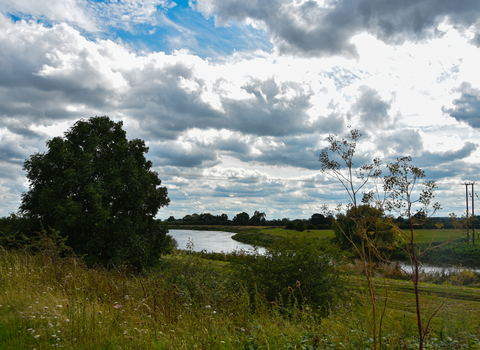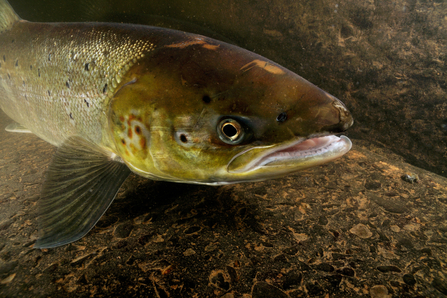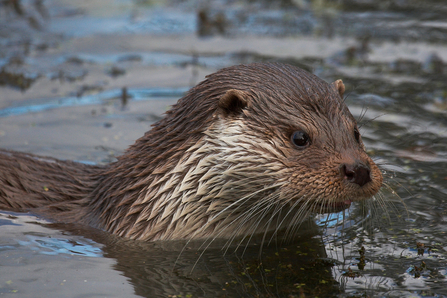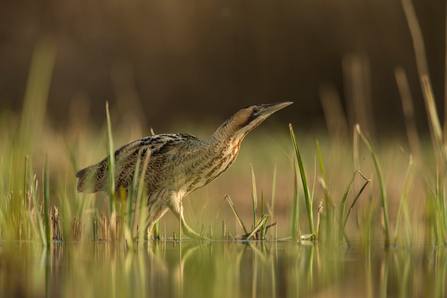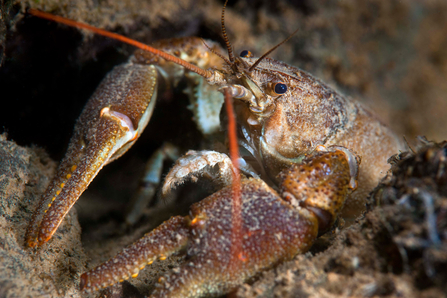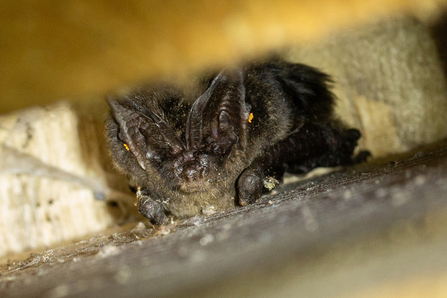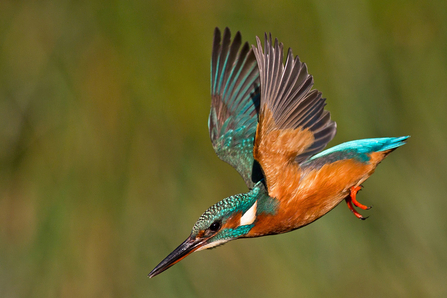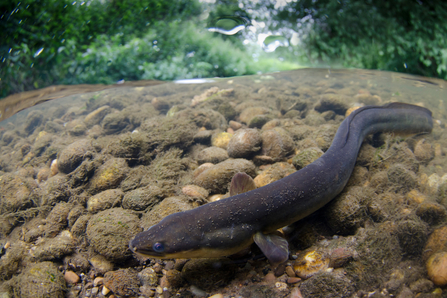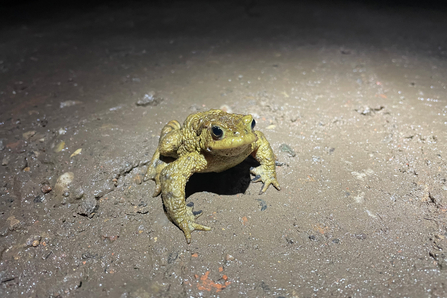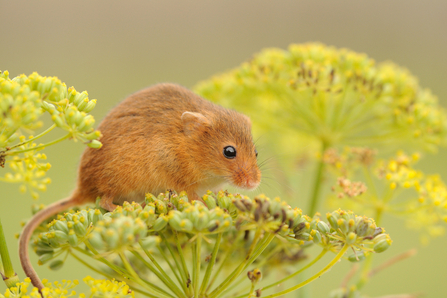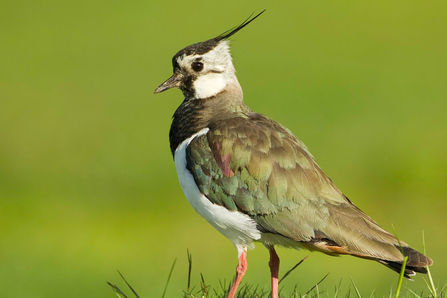Helping species along the River Trent
The Thriving in a Wilder Trent project sets out to create and restore habitat across the River Trent, and will increase the populations of a huge range of waders, wildfowl, amphibians, reptiles, fish, mammals, plants and invertebrates. Here's a run down of ten of the species who are most in trouble and are set to benefit from this vital work!
If you want to find out more about a species, click or tap the images or the headings to visit the species page.
Atlantic salmon
Atlantic Salmon live in rivers in the UK as juveniles, and when they are fully grown adults they swim downriver all the way to the sea. They make the epic journey back to the rivers to breed, returning to the place they were born. They even have to leap up waterfalls to reach their breeding areas. The highest recorded jump of a salmon is 3 meters!
Unfortunately, Atlantic salmon are a threatened species. Wild populations are being badly affected by river pollution, fishing, building weirs and other obstacles in the river, disease from fish farms and climate change.
European otter
Otters are very elusive predators who live around rivers, wetlands and even the coast. They are well adapted to life around water, with webbed feet and thick waterproof fur. They can even close their ears and nose up to stop water getting in! Even though they are such excellent swimmers, otters can’t hold their breath for a long time, staying underwater for between 5 and 30 seconds.
Like a lot of wildlife that lives around rivers, pollution has a big impact on otters in the UK, as well as habitat loss and getting hit by cars.
Bittern
Bitterns are very shy birds who live in reedbeds. They have specially camouflaged feathers and can stand incredibly still so they are almost invisible. This helps them to catch fish. In the spring you can hear male bitterns make a very loud noise like air being blown over an empty bottle. This is known as a ‘boom’ and can be heard up to 2 miles away!
In 1997 there were only 11 male bitterns left in the UK. Thanks to conservation efforts there are now 80, but there is still work to be done to help these amazing birds. They are threatened by habitat loss as many wetlands in the UK have been drained for agriculture and development
White-clawed crayfish
White clawed crayfish are the only native species of crayfish in the UK. They are omnivores, which means they eat a very varied diet of plants, insects and carcasses. White clawed crayfish use minerals in the water to build a hard exoskeleton for protection, the same way human bodies use calcium for strong teeth and bones.
The North American signal crayfish, brought over from the USA in the 1970's to be farmed, is one of the biggest threats to white clawed crayfish. This is because they carry a disease that has almost wiped out our native crayfish.
Barbastelle bat
Barbastelle bats live in woodlands, and at night they hunt for insects to eat over water. They are one of the rarest bat species in the UK. The name barbastelle comes from the latin word 'barbastella', which means ‘star beard’. This is because these bats have white fur around their mouths.
Barbastelle bats are so rare that not much is known about them. It is estimated that there are around 5,000 in the UK, but experts are unsure if their population is increasing, decreasing or stable as they are so mysterious!
Kingfisher
Blink and you may miss the fantastic kingfisher! This beautiful bird is easy to recognise thanks to its bright blue and metallic copper colours. You can tell male and female kingfishers apart, as females have a bright red patch on their beaks. It darts along the riverbank or sits patiently on a low branch over the water waiting for its next meal to swim by.
Pollution, habitat loss and predation by invasive American mink are all big problems for the kingfisher.
European eel
The eel is famous for both its slippery nature and its mammoth migration from its freshwater home to the Sargasso Sea where it breeds. Eels can survive out of the water for quite some time. While migrating they sometimes have to crawl along the ground to reach freshwater.
It has suffered dramatic declines and is a protected species. The number of eels arriving in Europe has fallen by 95% in the last 40 years. The exact cause is not fully understood, but its thought the habitat loss, pollution, overfishing, dams and weirs and climate change are all factors.
Common toad
A shy creature, common toads like to spend their time in dark, damp places where they can find lots of tasty slugs and insects to eat! They hibernate in the winter to avoid the cold. Toads can secrete a bitter substance from their warts when they are threatened. This is enough to make any would be predator leave them alone!
Busy roads create a big problem for toads when they are migrating, as they can get squished trying to cross them at night to reach breeding ponds. It is estimated 20 tonnes of toads are killed this way every year. This is the equivalent weight to 3 fully grown African elephants.
Harvest mouse
Harvest mice like to live in long grass and reedbeds, where they eat seeds and fruit. They create little nests of tightly woven grass. Harvest mice are the only British mammal to have a prehensile tail, meaning they can use it as another limb to climb, similar to monkeys.
In order to help out Harvest mice, we need to ensure there is plenty of habitat for them to live in and find food.
Lapwing
This distinctive bird forms large flocks in the winter that can often be seen in the sky. They are often found in farmland and wetlands. In order to attract a mate, male lapwings perform incredible aerial acrobatics.
Like many birds that live on wetland or farmland, lapwing are declining. This is the result of habitat loss and changes in agricultural practices.
Honourable Mentions
There are so many species that Thriving in a Wilder Trent will be giving a helping hand that it's hard to pick just ten! Here are some honourable mentions that didn't quite make the main list.
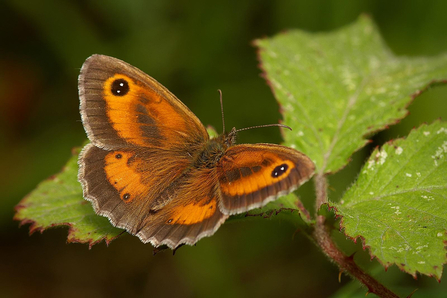
Gatekeeper - Photo © David Longshaw
Bearded tit: The bearded tit is an unmistakable cinnamon-coloured bird found in reedbeds. Males actually sport a black 'moustache', rather than a beard!
Common tern: During the breeding season, the common tern can be seen around our coasts and also inland at gravel pits, reservoirs and lakes. It nests in noisy colonies and can be spotted plunge-diving for fish.
Gatekeeper: The gatekeeper butterfly can usually be found in summer on grasslands, in woodlands and along hedgerows. Look out for the large eyespots with two 'pupils'!
Great crested newt: With its prominent, wavy crest, the great crested newt looks like a mini dinosaur! This protected species favours clean ponds during the breeding season.
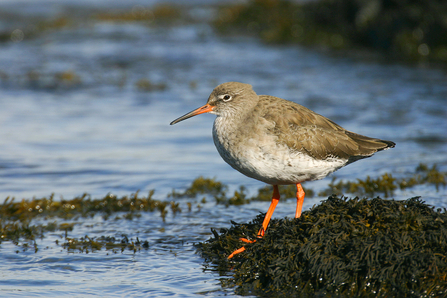
Redshank - Photo © Tom Marshall
Greenshank: The greenshank breeds on the boggy moors and ancient peatlands of Scotland. But it can be spotted elsewhere in the UK as it passes through on migration - look around lakes, marshes and the coast.
Marsh harrier: The courtship of the marsh harrier is certainly a sight to behold - wheeling and tumbling through the sky, male and female partners lock talons in mid-air.
Redshank: The redshank lives up to its name as it sports distinctive long, bright red legs! It feeds and breeds on marshes, mudflats, mires and saltmarshes. Look out for it posing on a fence post or rock.
River lamprey: The river lamprey is a primitive, jawless fish, with a round, sucker-mouth which it uses to attach to other fish to feed from them. Adults live in the sea and return to freshwater to spawn.
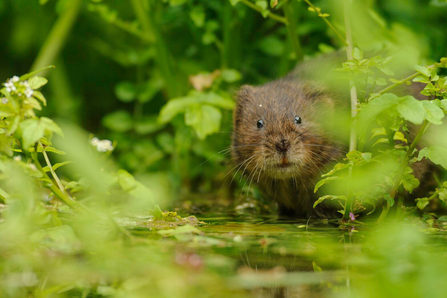
Water vole - Photo © Terry Whittacker / 2020VISION
Snipe: Listen out for the 'drumming' sound of a male snipe as it performs its aerial courtship display. It's not a call, but actually its tail feathers beating in the wind. Snipe live on wet grassland, marshes and moorlands throughout the UK.
Water vole: The water vole is under serious threat from habitat loss and predation by the American mink. Found along our waterways, it is similar-looking to the brown rat, but with a blunt nose, small ears and furry tail.
Willow tit: The willow tit lives in wet woodland and willow carr. It is very similar to the marsh tit, but has a distinctive pale panel on its wings.
Woodcock: Sometimes known as the snipe of the woods, the exquisitely camouflaged woodcock is mainly nocturnal, hiding in the dense undergrowth of woodlands and heathlands during the day.

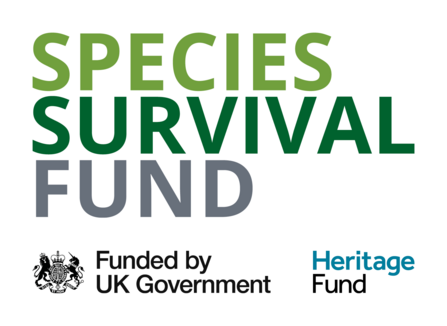
This project is funded by the Government's Species Survival Fund. The fund was developed by Defra and its Arm's-Length Bodies. It is being delivered by The National Lottery Heritage Fund in partnership with Natural England and the Environment Agency.

